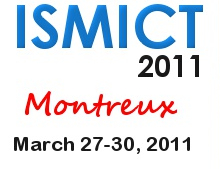Go to
Saied Hosseini-Khayat
 Assistant Professor
Assistant Professor
Department of Electrical Engineering
Ferdowsi University of Mashhad (FUM), Iran
Towards Ultra light-weight Solutions for IMD Security
The newest generation of wireless implantable devices can leave the patients vulnerable to malicious attacks. On the other hand, securing such devices may seem to increase the cost, area and energy consumption of the IMD chips beyond acceptable limits. In this talk, we will map out the requirements, constraints, and trade-offs involved in the design of IMD chips. From the outset, it is clear that standard data security solutions that work in regular applications (such as e-commerce) are prohibitively expensive for IMD applications. We argue that creating special-purpose ultra light-weight algorithms and protocols are both necessary and feasible. We will outline some candidate solutions and pose a few research questions and design challenges.
About the speaker:
Dr. Saied Hosseini-Khayat holds a BS degree in electrical engineering from Shiraz University, Iran, and MS and PhD degrees in electrical engineering from Washington University in St. Louis, Missouri, USA. He has held engineering position at Globespan Semiconductor Inc., Redbank, NJ, Network Programs Inc., Piscataway, NJ, and Erlang Technologies Inc., St. Louis, MO, USA. At present, he is an assistant professor with the department of electrical engineering at Ferdowsi University of Mashhad (FUM), Iran. His expertise lies in the area of FPGA/ASIC design of for communications, networking and cryptography. He has held visiting positions at Polystim Neurotechnologies Laboratory at Ecole Polytechnique de Montreal, and the (Australian) University of Wollongong. During his academic career, he has served as the head of graduate committee for communication engineering at FUM, and has taught numerous graduate and undergraduate courses on digital circuit and system design, applied cryptography and DSP. His current research interests include design and implementation of special-purpose low-power processors for biomedical applications.
Secondary navigation
- EPFL Workshop on Logic Synthesis and Emerging Technologies
- Luca Amaru
- Luca Benini
- Giovanni De Micheli
- Srini Devadas
- Antun Domic
- Rolf Drechsler
- Pierre-Emmanuel Gaillardon
- Jie-Hong Roland Jiang
- Akash Kumar
- Shahar Kvatinsky
- Yusuf Leblebici
- Shin-ichi Minato
- Alan Mishchenko
- Vijaykrishnan Narayanan
- Ian O'Connor
- Andre Inacio Reis
- Martin Roetteler
- Julien Ryckaert
- Mathias Soeken
- Christof Teuscher
- Zhiru Zhang
- Symposium on Emerging Trends in Computing
- Layout synthesis: A golden DA topic
- EPFL Workshop on Logic Synthesis & Verification
- Luca Amaru
- Luca Benini
- Robert Brayton
- Maciej Ciesielski
- Valentina Ciriani
- Jovanka Ciric-Vujkovic
- Jason Cong
- Jordi Cortadella
- Giovanni De Micheli
- Antun Domic
- Rolf Drechsler
- Henri Fraisse
- Paolo Ienne
- Viktor Kuncak
- Enrico Macii
- Igor Markov
- Steven M. Nowick
- Tsutomu Sasao
- Alena Simalatsar
- Leon Stok
- Dirk Stroobandt
- Tiziano Villa
- Symposium on Emerging Trends in Electronics
- Raul Camposano
- Anantha Chandrakasan
- Jo De Boeck
- Gerhard Fettweis
- Steve Furber
- Philippe Magarshack
- Takayasu Sakurai
- Alberto Sangiovanni-Vincentelli
- Ken Shepard
- VENUE
- Panel on Circuits in Emerging Nanotechnologies
- Panel on Emerging Methods of Computing
- Panel on The Role of Universities in the Emerging ICT World
- Panel on Design Challenges Ahead
- Panel on Alternative Use of Silicon
- Nano-Bio Technologies for Lab-on-Chip
- Functionality-Enhanced Devices Workshop
- More Moore: Designing Ultra-Complex System-on-Chips
- Design Technologies for a New Era
- Nanotechnology for Health
- Secure Systems Design
- Surface Treatments and Biochip Sensors
- Security/Privacy of IMDs
- Nanosystem Design and Variability
- Past Events Archive
Downloads
Presentation Slides:
SPIMD flyer including workshop schedule (250 KB pdf)
EPFL campus map (2.3 MB pdf)
Registration
Registration is free of charge. Please send an e-mail with subject line "SPIMD workshop registration" to anil.leblebici@epfl.ch to register. Make sure to state your full name and affiliation.


